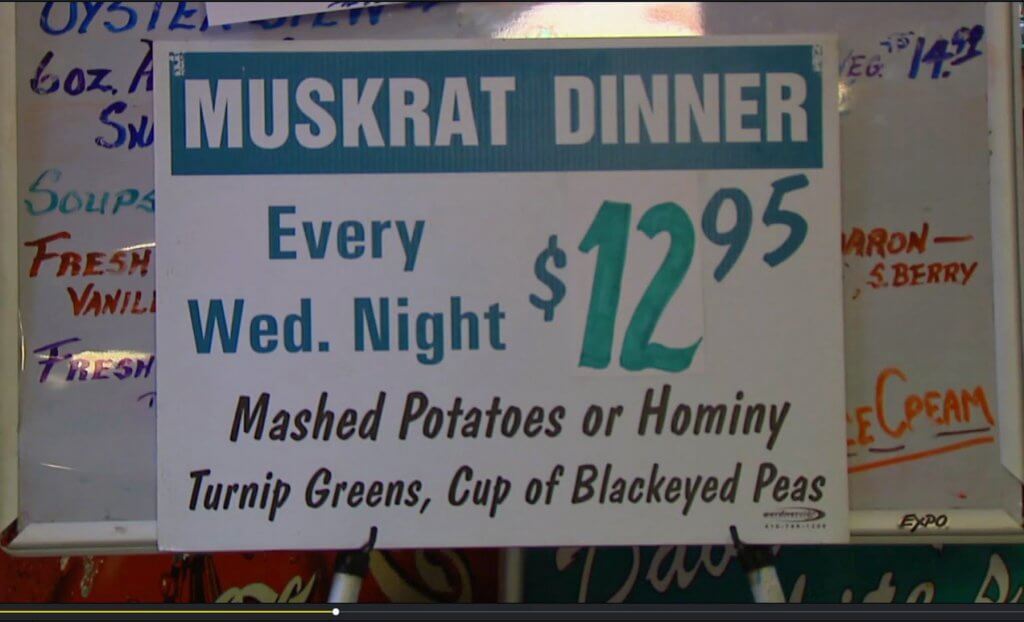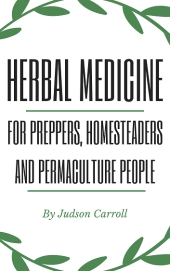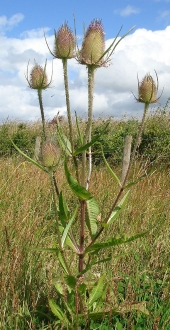
 5
5




Together is our favorite place to be
 2
2




John 3:16
 2
2




 3
3




"Them that don't know him don't like him and them that do sometimes don't know how to take him, he ain't wrong he's just different and his pride won't let him do the things to make you think he's right" - Ed Bruce (via Waylon and WIllie)

 5
5




 2
2




My name is Hank Shaw; I’m a James Beard Award-winning author and chef. I started this site back in 2007 to help you get the most out of all things wild: fish, game, edible wild plants and mushrooms. Fifteen years later I’m still at it, hunting, fishing and gathering all over the US, Canada and Mexico. Hope you enjoy the site!
'What we do now echoes in eternity.' Marcus Aurelius
How Permies Works Dr. Redhawk's Epic Soil Series
 5
5





"How fleeting are all human passions compared with the massive continuity of ducks.“ — Dorothy L. Sayers
 2
2




Joylynn Hardesty wrote:I want to know about such stuff too. I've been listening to a podcast by Hank Shaw for free on Spotify.
My name is Hank Shaw; I’m a James Beard Award-winning author and chef. I started this site back in 2007 to help you get the most out of all things wild: fish, game, edible wild plants and mushrooms. Fifteen years later I’m still at it, hunting, fishing and gathering all over the US, Canada and Mexico. Hope you enjoy the site!
From his website, Honest Food, where there are lots of recipies. And his books too.
Though my intitial search did not find a groundhog recipie.
"Them that don't know him don't like him and them that do sometimes don't know how to take him, he ain't wrong he's just different and his pride won't let him do the things to make you think he's right" - Ed Bruce (via Waylon and WIllie)
 2
2




Judson Carroll wrote:
Joylynn Hardesty wrote:I want to know about such stuff too. I've been listening to a podcast by Hank Shaw for free on Spotify.
My name is Hank Shaw; I’m a James Beard Award-winning author and chef. I started this site back in 2007 to help you get the most out of all things wild: fish, game, edible wild plants and mushrooms. Fifteen years later I’m still at it, hunting, fishing and gathering all over the US, Canada and Mexico. Hope you enjoy the site!
From his website, Honest Food, where there are lots of recipies. And his books too.
Though my intitial search did not find a groundhog recipie.
Hank is a good guy. We communicated a few years ago. My cookbook will be released Oct !
 6
6





 5
5




Visit Redhawk's soil series: https://permies.com/wiki/redhawk-soil
How permies.com works: https://permies.com/wiki/34193/permies-works-links-threads
 1
1




 1
1




Gray Henon wrote:I’m a big fan of groundhog. We shoot them with various guns. We always seem to get younger ones, maybe they are dumb, so I can’t say how the larger ones taste. Our favorite way to cook them is about 15 min in the pressure cooker, just until tender, but not falling apart, then bread and fry. As far as survival goes, they are something to eat, but, small game in general, is quickly depleted from an area unless you have hundreds of acres to hunt.
Together is our favorite place to be
 1
1




Jennifer Sooke wrote:For Protein:
Pine Pollen - 30% protein and contains 20 amino acids including the 9 essential amino acids. L- arginine, an amino acid that stimulates the production of nitric oxide, a compound that opens and dilates blood vessels to increase blood flow, is very beneficial to athletes.
It can be added to anything.
Tried & True - Beans+Rice Combo (I prefer lentils)
Together is our favorite place to be
 1
1




Nicole Alderman wrote:
Judson Carroll wrote:
Joylynn Hardesty wrote:I want to know about such stuff too. I've been listening to a podcast by Hank Shaw for free on Spotify.
My name is Hank Shaw; I’m a James Beard Award-winning author and chef. I started this site back in 2007 to help you get the most out of all things wild: fish, game, edible wild plants and mushrooms. Fifteen years later I’m still at it, hunting, fishing and gathering all over the US, Canada and Mexico. Hope you enjoy the site!
From his website, Honest Food, where there are lots of recipies. And his books too.
Though my intitial search did not find a groundhog recipie.
Hank is a good guy. We communicated a few years ago. My cookbook will be released Oct !
Judson, if you ever want to do a book giveaway here on permies to promote your cookbook, we're totally open to that!
(You probably know most of the book promo/giveaway details, but if not, here's the official info on book promos for authors/publishers)
"Them that don't know him don't like him and them that do sometimes don't know how to take him, he ain't wrong he's just different and his pride won't let him do the things to make you think he's right" - Ed Bruce (via Waylon and WIllie)
 1
1





those people who have had the chance to eat muskrat, most of them probably decided to pass. Here’s the thing about muskrats – they look like a big wet toothy rat. Their teeth are orangish and the flesh is dark and somewhat stringy.
Invasive plants are Earth's way of insisting we notice her medicines. Stephen Herrod Buhner
Everyone learns what works by learning what doesn't work. Stephen Herrod Buhner
 1
1




Joylynn Hardesty wrote:I want to know about such stuff too. I've been listening to a podcast by Hank Shaw for free on Spotify.
My name is Hank Shaw; I’m a James Beard Award-winning author and chef. I started this site back in 2007 to help you get the most out of all things wild: fish, game, edible wild plants and mushrooms. Fifteen years later I’m still at it, hunting, fishing and gathering all over the US, Canada and Mexico. Hope you enjoy the site!
From his website, Honest Food, where there are lots of recipies. And his books too.
Though my intitial search did not find a groundhog recipie.
Together is our favorite place to be
 1
1




 4
4




 4
4




"Them that don't know him don't like him and them that do sometimes don't know how to take him, he ain't wrong he's just different and his pride won't let him do the things to make you think he's right" - Ed Bruce (via Waylon and WIllie)
 5
5




Douglas Alpenstock wrote:I would be happy if someone could point out a source that details all the musk glands that need to be removed from wild meat, especially rodents, to avoid tainting the meat.
"Them that don't know him don't like him and them that do sometimes don't know how to take him, he ain't wrong he's just different and his pride won't let him do the things to make you think he's right" - Ed Bruce (via Waylon and WIllie)




Cris Fellows wrote:
Joylynn Hardesty wrote:I want to know about such stuff too. I've been listening to a podcast by Hank Shaw for free on Spotify.
My name is Hank Shaw; I’m a James Beard Award-winning author and chef. I started this site back in 2007 to help you get the most out of all things wild: fish, game, edible wild plants and mushrooms. Fifteen years later I’m still at it, hunting, fishing and gathering all over the US, Canada and Mexico. Hope you enjoy the site!
From his website, Honest Food, where there are lots of recipies. And his books too.
Though my intitial search did not find a groundhog recipie.
I did not know his name, but I look to his website often. His roasted chicory recipe got me started. Now I gave to look closer.
"Them that don't know him don't like him and them that do sometimes don't know how to take him, he ain't wrong he's just different and his pride won't let him do the things to make you think he's right" - Ed Bruce (via Waylon and WIllie)
 3
3




"Them that don't know him don't like him and them that do sometimes don't know how to take him, he ain't wrong he's just different and his pride won't let him do the things to make you think he's right" - Ed Bruce (via Waylon and WIllie)
 4
4




Mercy Pergande wrote:I have seen a lot of these kinds of meats in spiral bound self-published cookbooks from southern communities - one on Alabama game, plenty of Louisiana books with recipes for nutria, turtle, squirrel, old books with recipes for possum and "mixed game" camp stews. My ancestors were big mullet fishers (an "alternative" fish) on the Atlantic coast. Looking for those older community based books you find in thrift stores where it was more common to eat whatever was available is a good place to start on the items you mentioned. Anything from Louisiana is a good bet.
How to Cook a Wolf is a classic, although not my most practical book on this topic
"How fleeting are all human passions compared with the massive continuity of ducks.“ — Dorothy L. Sayers







 1
1




 1
1




"How fleeting are all human passions compared with the massive continuity of ducks.“ — Dorothy L. Sayers
 1
1




"Them that don't know him don't like him and them that do sometimes don't know how to take him, he ain't wrong he's just different and his pride won't let him do the things to make you think he's right" - Ed Bruce (via Waylon and WIllie)
 4
4




"Them that don't know him don't like him and them that do sometimes don't know how to take him, he ain't wrong he's just different and his pride won't let him do the things to make you think he's right" - Ed Bruce (via Waylon and WIllie)
 2
2




No man is an island.
 1
1




Tim Siemens wrote:Around my area, black bear is likely the easiest source of protein and fat. I disagree with the book pictured that says remove all fat from bear. Fat on bear is not like wild ungulates. The flavour is not bad and it makes great lard. Besides, fat is a great source of energy and keeps you warm in the winter.
"Them that don't know him don't like him and them that do sometimes don't know how to take him, he ain't wrong he's just different and his pride won't let him do the things to make you think he's right" - Ed Bruce (via Waylon and WIllie)
 1
1









Tim Siemens wrote:Around my area, black bear is likely the easiest source of protein and fat. I disagree with the book pictured that says remove all fat from bear. Fat on bear is not like wild ungulates. The flavour is not bad and it makes great lard. Besides, fat is a great source of energy and keeps you warm in the winter.
Together is our favorite place to be

| I agree. Here's the link: http://stoves2.com |






